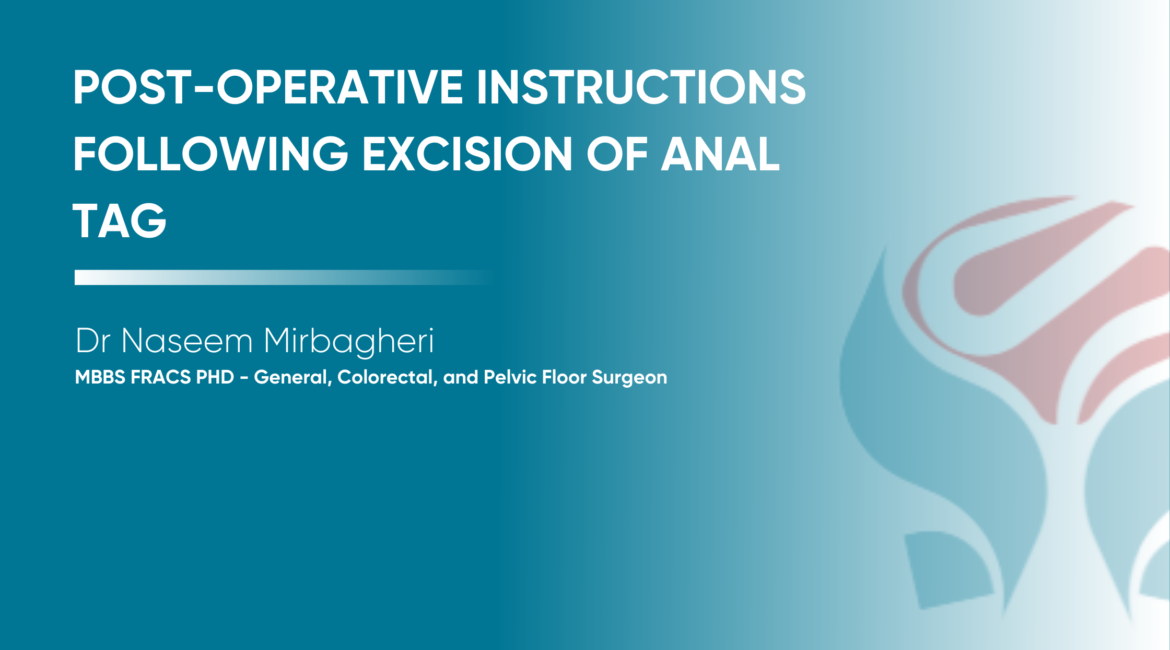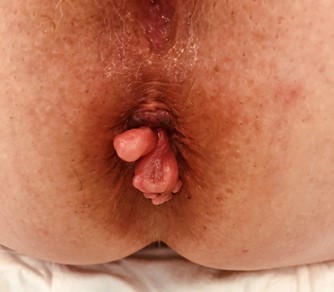Day Procedure
The removal of skin tag is performed using electrosurgery. A diathermy handle is used to cut the anal tag, diathermy refers to a surgical instrument that converts electrical energy into heat, used for cutting skin and cauterising bleeding vessel. The wound is then left open to heal, no sutures is used to close the wound, to reduce the risk of swelling and infection. The procedure will take about 10-15min. This procedure is very well tolerated by all patients, the only pain or sting you will experience is from the injection of local anaesthetic which will last from 10-15 seconds. It is a ‘walk in’ and ‘walk out’ treatment, which means there is no downtime. But the recovery can take longer if you experience unexpected pain at the incision site e.g. a fissure.
Local anaesthetic
If you have had an injection to make the area numb (Local anaesthetic) it may remain numb for up to 4-8 hours. As the area is numb, please remember to be gentle when wiping. If you are allergic to any anaesthetic you must notify Dr Naseem ASAP.
Bleeding
There can be some bleeding after any operation. If this occurs, apply firm pressure with a clean tissue for 15 minutes. If there is a dressing in place, leave it on but press on top of the dressing. Do not keep taking the pressure off to see what is happening. If the dressing is very discoloured you may replace it later when the bleeding has stopped. This should control the bleeding but if bleeding continues or is not easily controlled, please contact us at the office on 0431 164 164 or after hours please contact Dr Naseem on [email protected].
Pain control
You were given a local anaesthetic injection prior to your surgical procedure to numb the skin. The effect of this will wear off gradually over about an hour or 4 hours depending on the type of anaesthetic used on the day. If you feel any pain or discomfort at the site of operation after the anaesthetic has worn off you may take your preferred pain killer. Paracetamol is usually adequate. You can also take with the paracetamol an anti-inflammatory tablet (e.g. voltaren or neurofen if not allergic and have not had prior bleeding gastric ulcer). Pain is usually worse during and after defaecation, a warm water bath with Epsom salt can sooth the spasm resulting from defaecation. To address swelling, you can wrap an ‘icy pole’ in paper towel and apply to the wound for 10 minutes every hour or so as convenient. If you find that your pain is not controllable with simple pain killers please contact us and we will provide you with stronger pain killer. You should expect your pain to get at its peak by day 3 and settle by day 5.
Infection
If your wound becomes hot, swollen and very painful or oozes pus, it may be infected. You may require antibiotics. Dr Naseem usually checks the wound a week after the procedure to ensure there is no infection.
Care of the wound
If you have had a dressing applied remove it once you are ready to use the toilet. Bathe or shower as normal after that. Being careful to pat the wound dry rather than rubbing it. If the wound feels dry, try some Chlorsig ointment from the pharmacy and apply as needed.
Scarring
Almost all procedures will leave a scar of some sort. This is most pronounced in the first weeks following surgery, after which it will fade but not disappear. Around the anal canal scarring is usually not seen due to the natural wrinkles in the skin. However, for the first 6 weeks you would notice significant swelling (like bubbles) around the anal canal, these usually settle by 6 weeks. Please avoid looking at your bottom during the first 6 weeks! Occasionally if the inflammatory response is severe and there is significant swelling you may actually be left with another skin tag, this is not common and in majority of the cases the swelling completely disappears within 6-8 weeks.
What are the complications of the procedure?
Most common complications are pain and swelling around the anal canal. Bleeding and infection less common and can be managed. One of the most significant complication is a non-healing wound also known as a fissure, this is when the wound has not healed by 6 weeks and you still have pain. You may need botox injection to address this complication. You are at risk of this complication if you have had prior fissures. In the first instance Dr Naseem will try topical creams such as Nifidepine, if you think you are at risk of anal fissure please notify Dr Naseem, prophylactic use of topical Nifidepine cream may help with anal spasms and facilitate healing of wound.
Recurrence of anal tags is always possible, it is usually a new one rather than an actual recurrence of your previous anal tag. Whatever has caused your initial tag may reoccur and result in another tag. More importantly, severe inflammation at the incision site where the tag has been removed can also result in formation of new anal tags.
Please read this information prior to seeing Dr Naseem and use the consultation during the procedure as an opportunity to ask any questions you may have.


